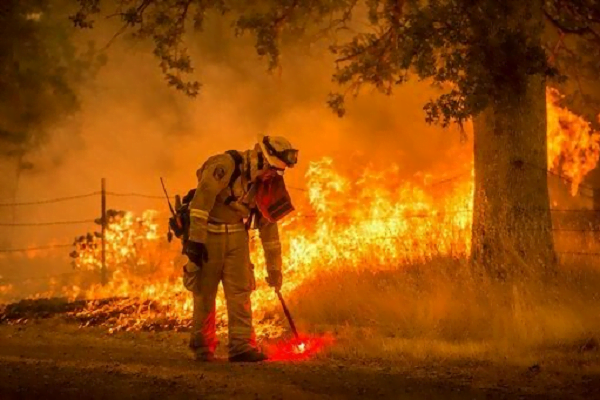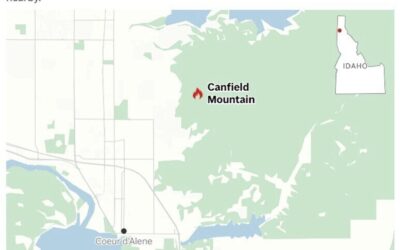State must step up use of prescribed burns

In this July 28, 2018, photo, a Cal Fire firefighter creates a back burn on Cloverdale Road near Redding, Calif., during the Carr Fire. With nearly 40 million people living in California and development spreading into once-wild regions, some of the state’s best tools toward preventing wildfires can’t be widely used. Still, there is growing agreement that the state must step up its use of forest management through prescribed burns and vegetation removal in an attempt to lessen the impact of wildfires. (Hector Amezcua/The Sacramento Bee via AP)
By STEVE SCHOONOVER Chico Enterprise-Record
CHICO, Calif. (AP) — With nearly 40 million people living in California and development spreading into once-wild regions, some of the state’s best tools toward preventing wildfires can’t be widely used.
Still, there is growing agreement that the state must step up its use of forest management through prescribed burns and vegetation removal in an attempt to lessen the impact of wildfires .
In March, Gov. Gavin Newsom declared a state of emergency on wildfires, designed to expedite forest-thinning projects and other programs. In May 2018, former Gov. Jerry Brown called for doubling the amount of forest land treated each year in California by 2023. The state significantly increased the money it was spending on those efforts, with the Legislature earmarking $1 billion over five years in funds generated by the state’s carbon trading program. The Trump administration has also vowed to manage forests more aggressively.
Cal Fire and the state Board of Forestry estimate 23 million acres in the state’s responsibility area could benefit from fuel reduction. And those treatments aren’t one-time efforts: they must be repeated every few years to be effective.
Among the biggest complications in forest management are California’s strict environmental regulations.
Forest treatment projects must obtain approvals under the California Environmental Quality Act. Butte County Fire Safe Council Executive Director Calli-Jane DeAnda said the environmental review process typically uses up 10 to 15 percent of grant funds local fire agencies receive for forest management projects. The reviews can take years.
The state has been working since 2010 on an EIR that would cover all vegetation treatments in California under one overarching environmental document. It would identify environmentally sound processes for various natural landscapes. Then, if a project were proposed that met the guidelines for its landscape, it could be approved through a “checklist scenario,” according to Board of Forestry Executive Director Matt Dias.
Some projects wouldn’t fit the template, he said, and would require more review, but the idea would be to get projects approved and moving forward in a matter of weeks instead of years. A goal has been set to complete the document by the end of the year.
Some environmental groups say state officials are pursuing the wrong path altogether.
Rick Halsey of the California Chaparral Institute said Cal Fire should place more focus on making communities more fire resistant, not on clearing vegetation.
“We have a home ignition problem,” he said, “not a vegetation control problem.”
He said it makes more sense to spend some of the vegetation control dollars on fireproofing measures like ember-resistant vents and fire resistant rooftops.
“We’ve got to stop looking in different directions than where people are, and frankly Cal Fire is not doing a good job at that,” he said. “The fundamental problem is that they’re a vegetation management agency … they’re not into the building thing. They have to look at the whole picture.”
He said chaparral needs high-intensity but infrequent fires. Vegetation removal won’t help that process. About all people can do to help the chaparral is to stop setting it on fire.
“There are so many people on the landscape causing so many unnatural ignitions,” he said.
All contents © copyright 2019 The Associated Press. All rights reserved.




